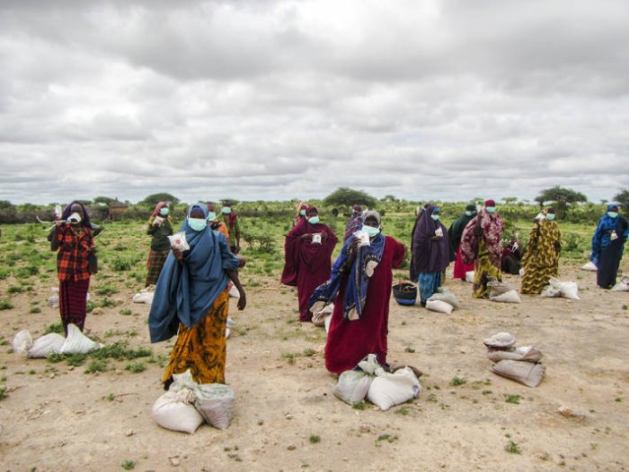2021 Revealed the Fragility of Food Systems

ROME, Dec 16 (IPS) - The end of this year has revealed the fragility of food systems when faced with sudden disruptions such as those observed during the COVID-19 pandemic. These disruptions have increased the number of people with limited or no access to food in the world. Today, more than 811 million people suffer from hunger, according to recent studies.
The State of Food and Agriculture (SOFA) 2021 report, published in November by the Food and Agriculture Organization of the United Nations (FAO) states that three billion people cannot afford healthy diets, and another billion could soon join these ranks if the crisis of the pandemic reduces their income by a third.
According to current projections, if an alteration in the transport routes of food products continues as it has been since the start of the pandemic, the cost of food could suffer an increase. This increase would greatly affect 845 million people.
These disruptions would impact on long-term trends in the food system, the welfare of people, their assets, their livelihoods and security, the ability to withstand future disarrays caused by extreme weather events and the heightening of diseases and pests in plants and animals.
Prior to the pandemic, difficulties in meeting the international community's commitments and achieving the Sustainable Development Goals (SDGs) by 2030, especially the eradication of hunger and poverty, were already present. The effects of COVID-19, coupled with climate change, armed conflict and rising food prices, could continue to exacerbate these difficulties.
Global agrifood systems, related to the complex production of agricultural food and non-food products, as well as their storage, processing, transportation, distribution and consumption, produce 11 billion tons of food annually and employ billions of people, either directly or indirectly.
The recent FAO report analyzes whether low-income countries face greater difficulties as a result of impacts of the pandemic than middle-to high-income countries. After analyzing this specific situation in more than 100 countries, the report confirms the trend that low-income countries face greater difficulties; however, middle- and high-income countries are not excluded from these impacts.
Such is the case of middle-income countries like Brazil, where 60% of the value of their exports comes from a single trading partner, which reduces their options if their main counterpart is affected by the disruptions generated by COVID-19.
The same can happen in high-income countries, such as Canada or Australia, if they are exposed to transportation variants due to the long distances required to cover food distribution.
According to recent expert studies, reducing essential connections in the distribution network could cause local transport time to increase by 20% or more, thus increasing food costs and prices for consumers.
Resilience in agrifood systems by governments should be one of the main strategies to respond to current and future challenges, seeking to diversify sources of inputs, production, markets, supply chain and actors, supporting the creation of small and medium-sized companies, cooperatives, consortiums and other groups to maintain diversity in the agrifood value chains.
In addition, the resilience of vulnerable households should be improved to ensure a world without hunger, through greater access to assets, diversified sources of income and social protection programs in the event of a crisis.
Today, family farms represent 90% of all farms in the world. FAO established a technical platform for family farming with the aim of fostering innovation and the exchange of information between regions.
According to the Director-General of FAO, QU Dongyu, when resources and knowledge are shared "innovation is accelerated", and while "this platform will allow us to think big, it will also facilitate the adoption of concrete measures" which will in turn allow for the conservation of biodiversity. This represents the first step towards rural transformation.
The relationship between agricultural nutrition and climate change is another outstanding component of the shocks that have continued to occur in 2021.
The increase in temperatures and the growing impact of radical atmospheric effects are exponentially affecting agriculture, causing an increase in the prices of raw materials as recorded by recent trends, and consequently aggravating the conditions of hunger and malnutrition.
If this trend continues, by 2050 agrifood production will decline by around 10%, at a time when there would be a strong increase in the world population.
There are also opportunities to reverse these trends related to agriculture, food and the environment, but in order for this to happen, greater investments is needed in this sector.
From precision agriculture and early warning systems, to improving the use of food waste and converting it into clean energy, to using water more efficiently, many practices are already being carried out in different countries. These solutions offer a sense of hope and show that we can reverse the present negative trends. When reflecting on the difficulties of the past year, we should continue to work towards finding concrete solutions instead of just pointing out the difficulties that the future of the agrifood industry faces.
© Inter Press Service (2021) — All Rights Reserved. Original source: Inter Press Service
 Global Issues
Global Issues